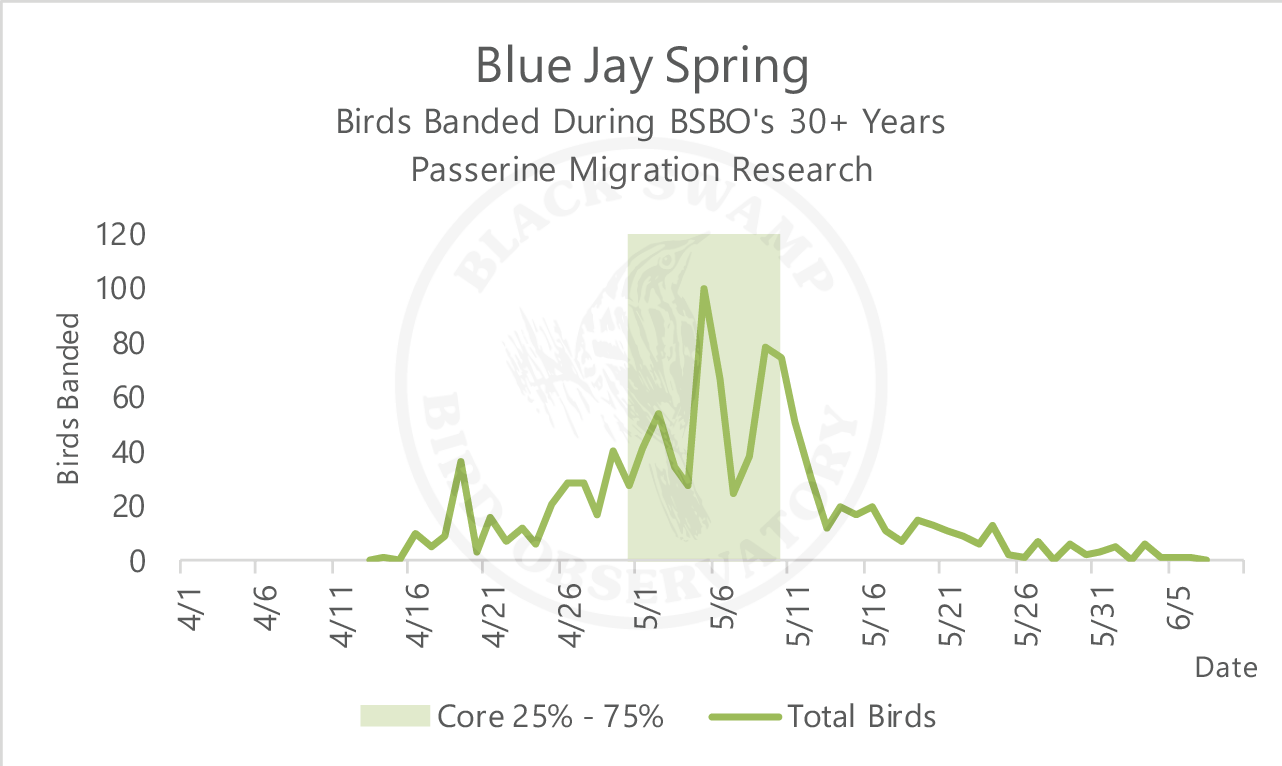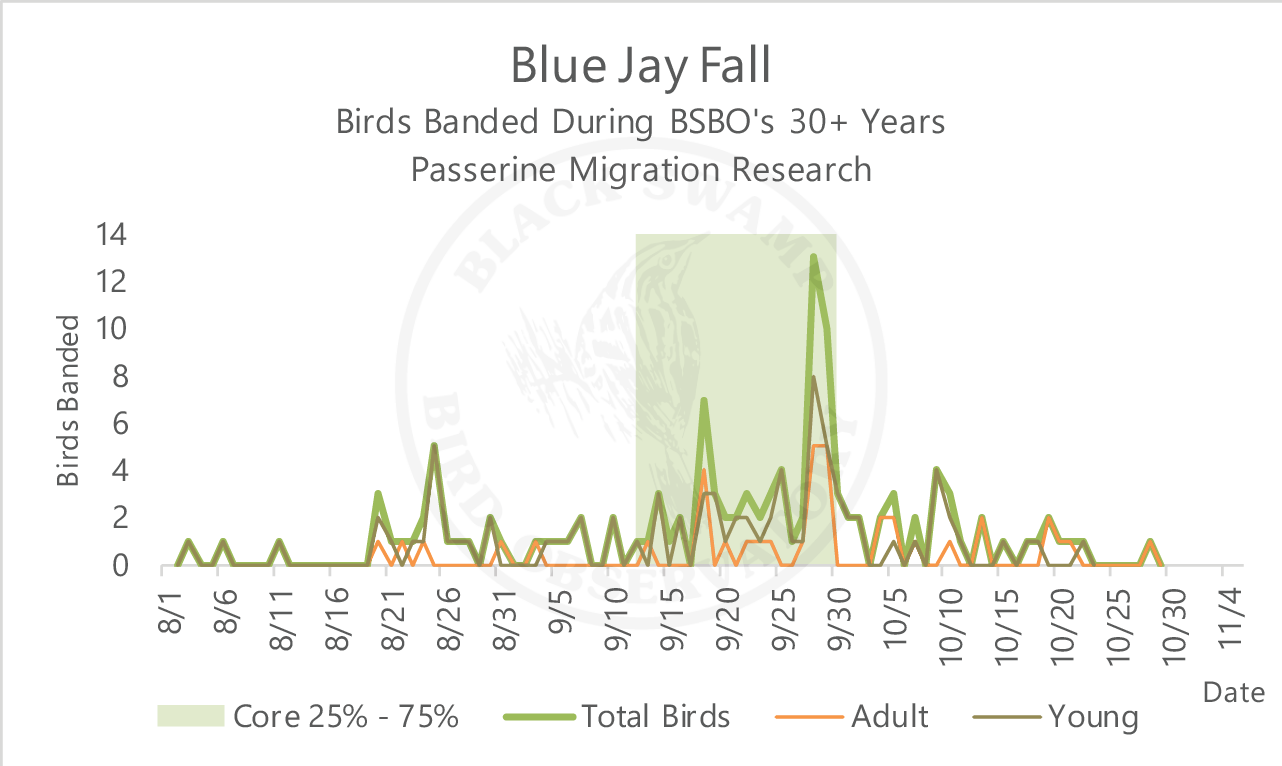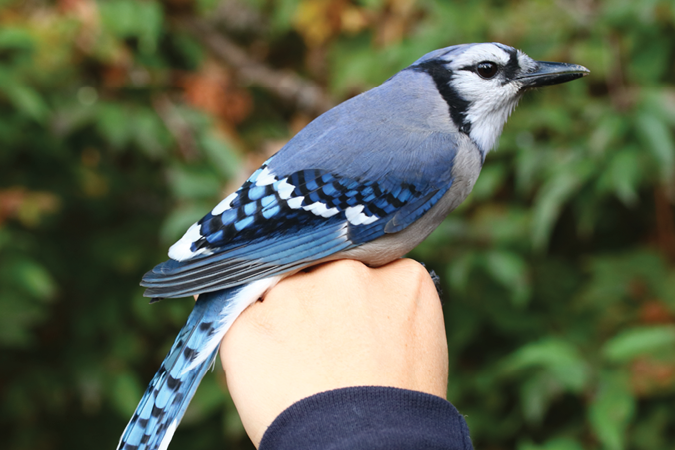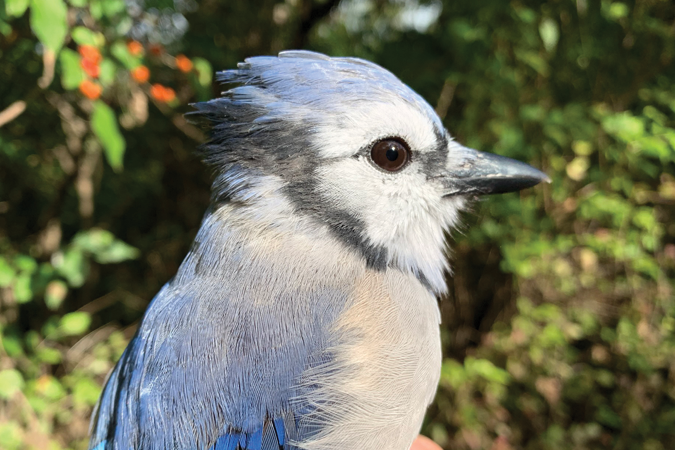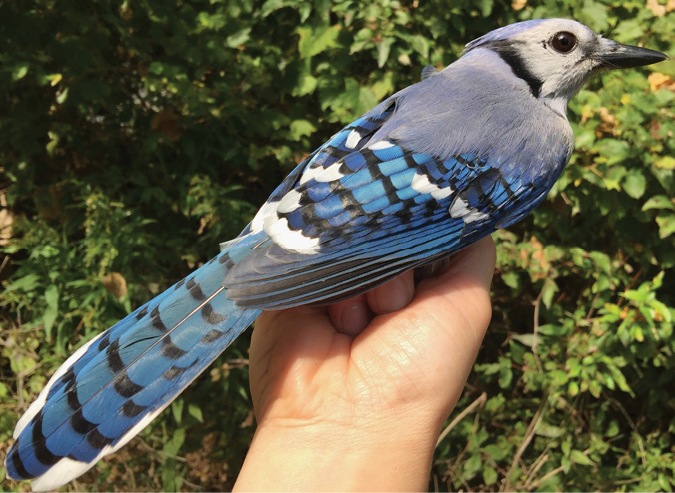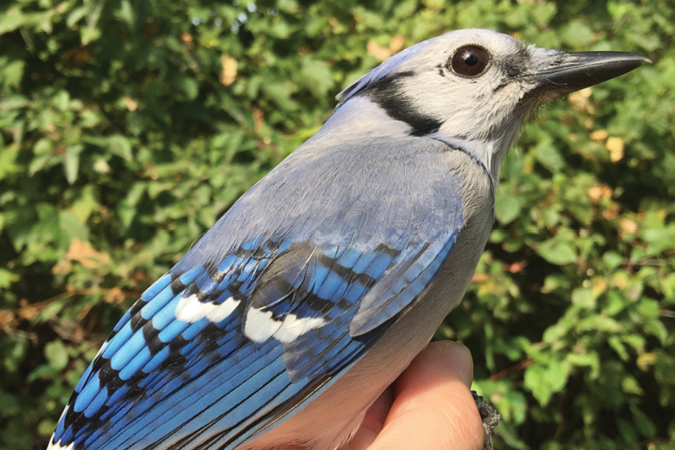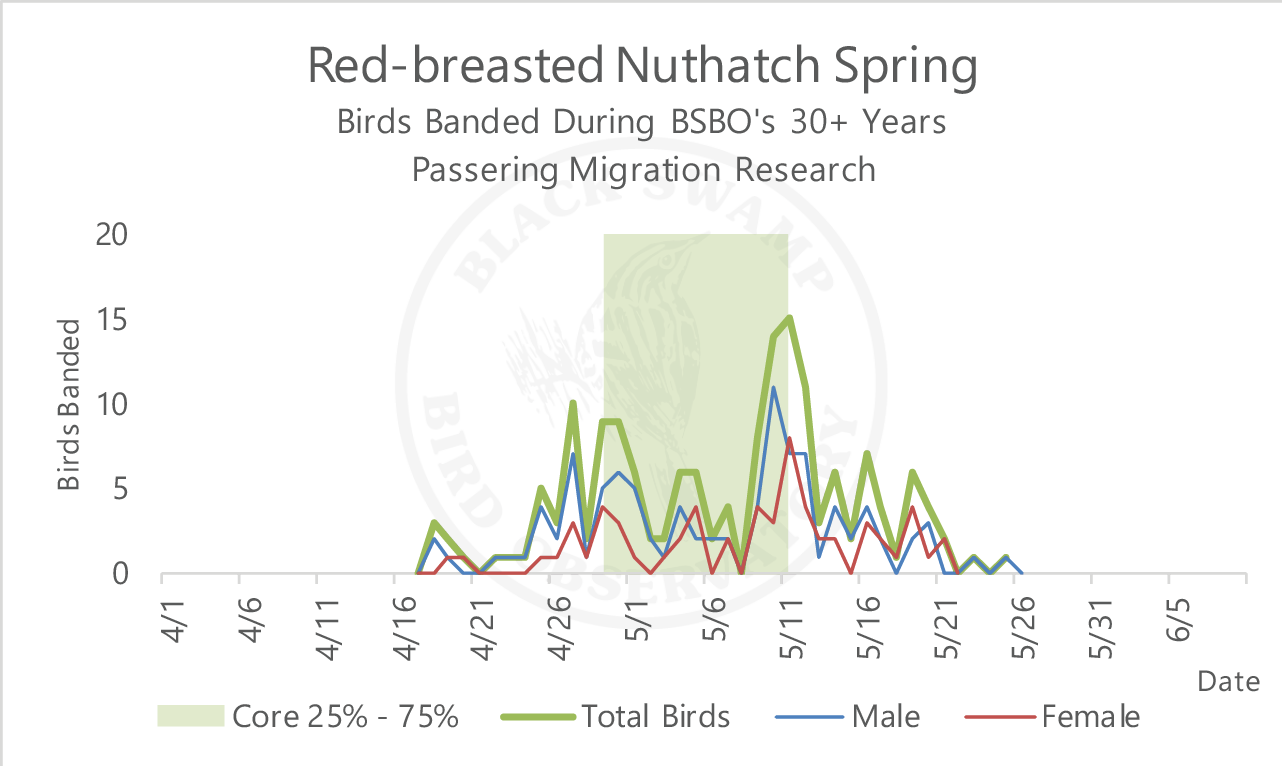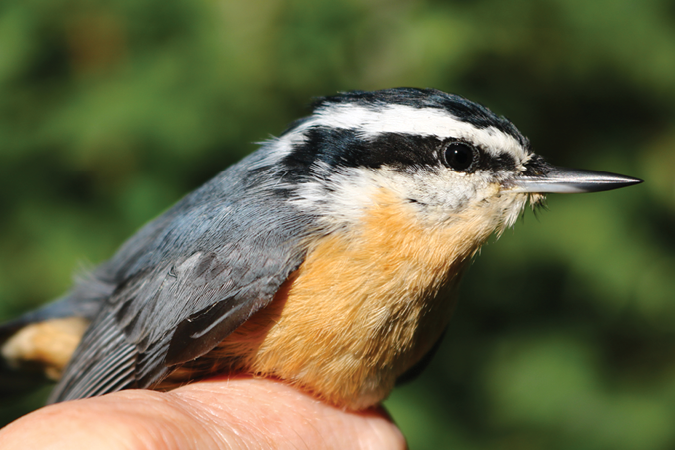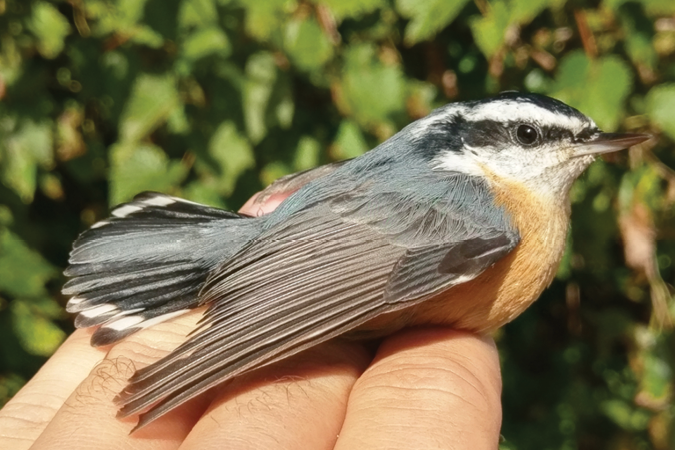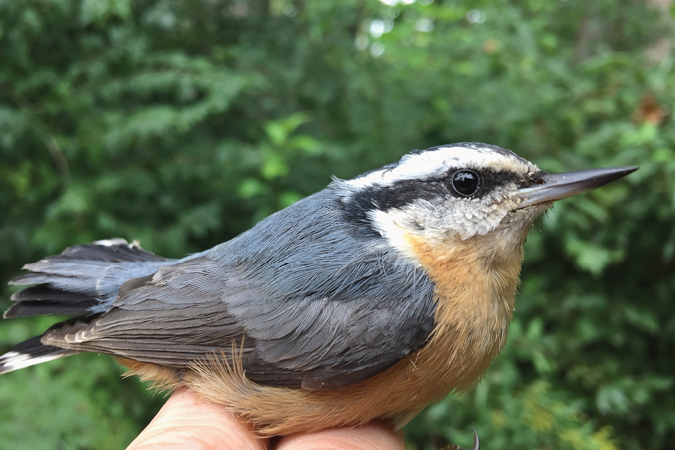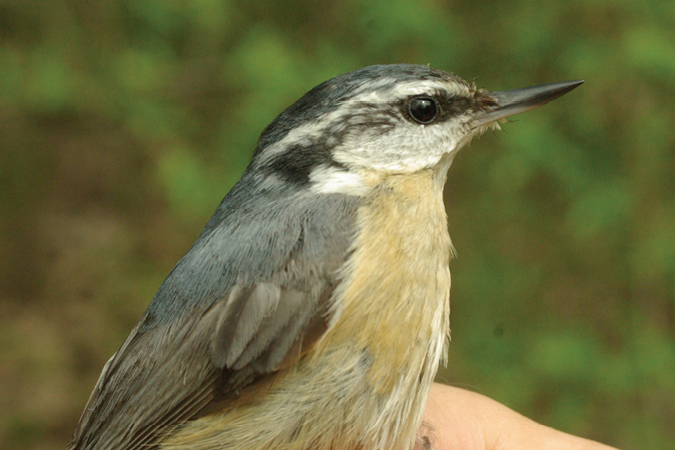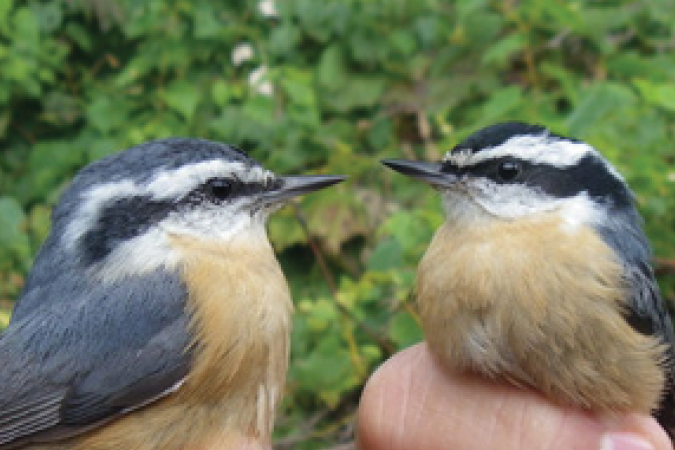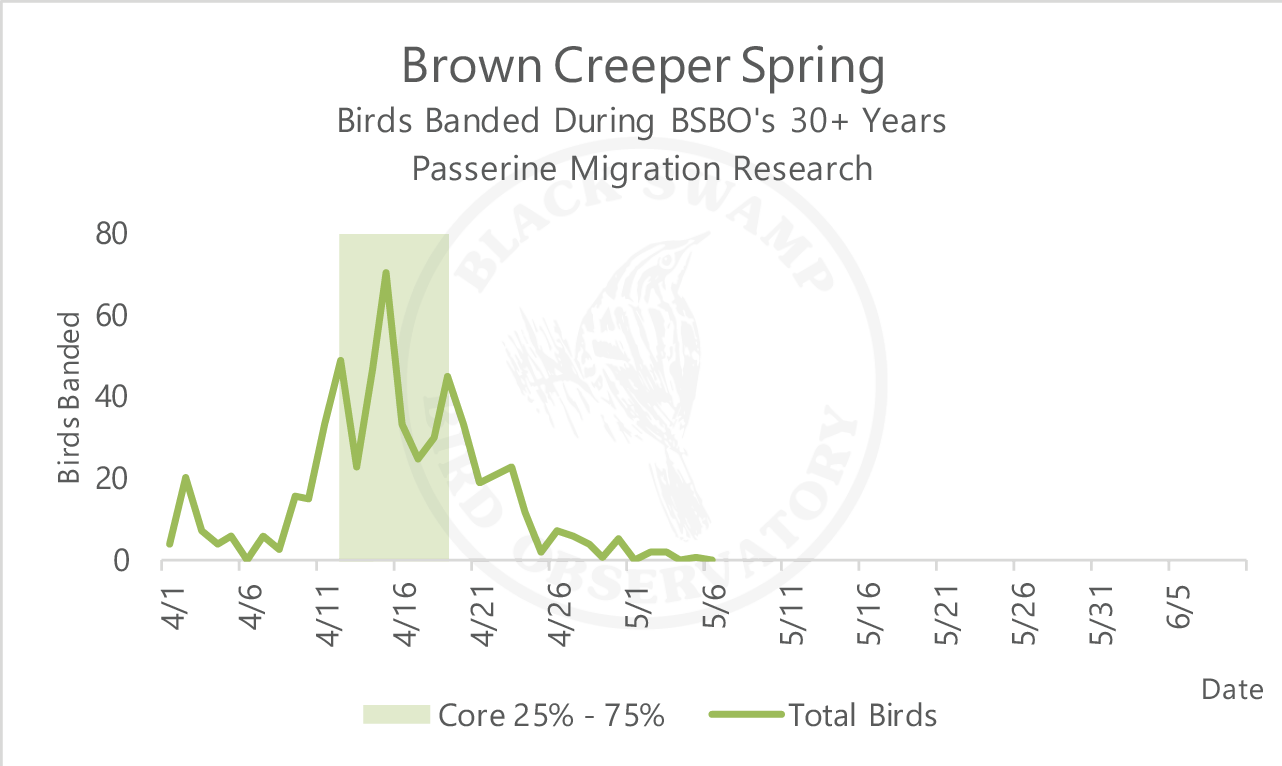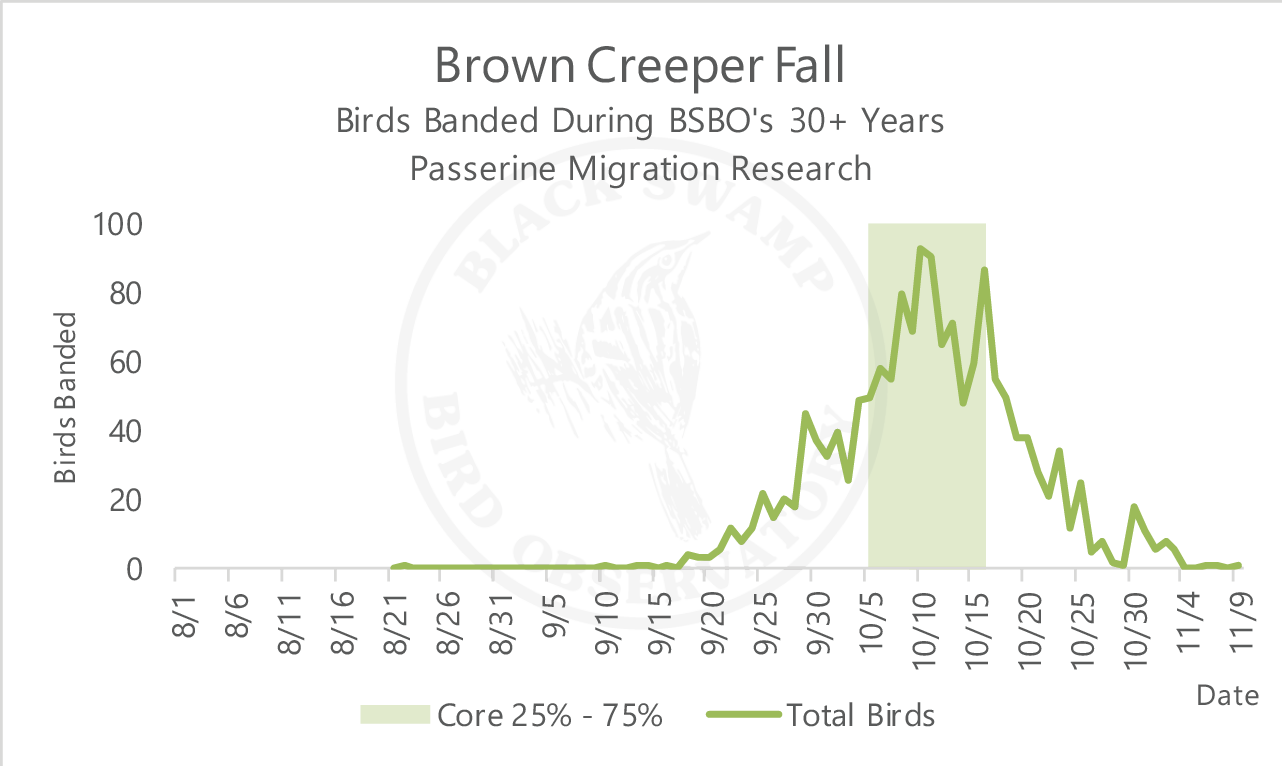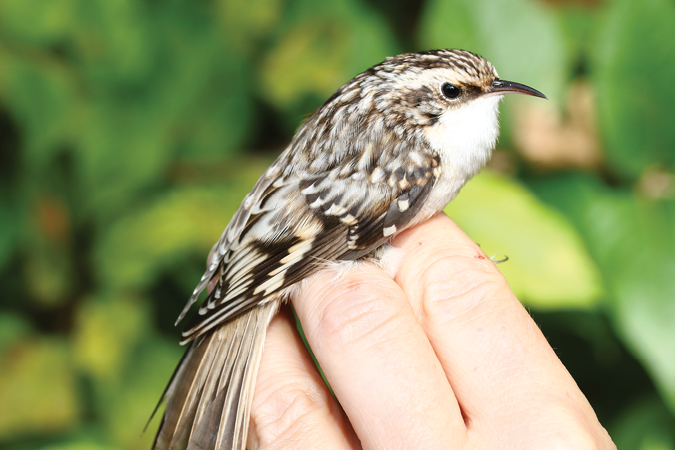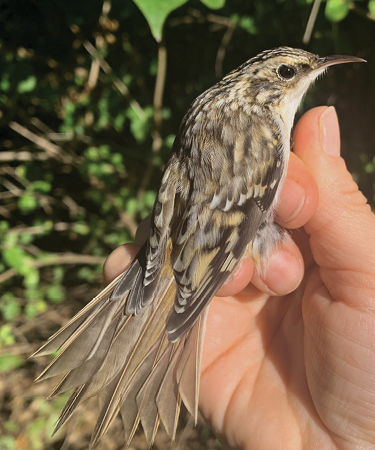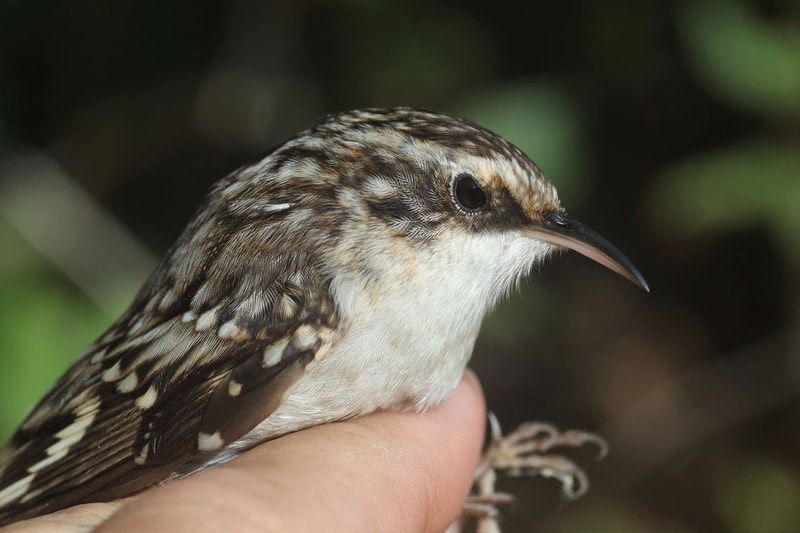Corvids Corvidae
About corvids in nw ohio
The Corvids comprise the crows and jays, which are represented in northern Ohio by the American Crow and Blue Jay. For this passerine migration study, the American Crow migrates too early and utilizes a habitat totally different than mist nets can document. Both species are diurnal migrants (traveling during the day) and can be impressive to anyone in the field when they are on the move. Both species show aversion to venturing over Lake Erie except where they can island hop. As a result, large flocks can be observed following the lake shore; first west and then east, and in circles as they attempt to gain their bearings and determine how to navigate this large imposing obstacle.
American Crow migration is a shadow of itself from decades ago. Today, to see flocks in late February and early March numbering in low double digits represents season highs. In the 1980s murders of crows were counted in the hundreds. One survey averaged 500 crows every ten minutes for a period of three hours passing through Magee Marsh Wildlife Area.
Banding numbers of Blue Jays are not a good representation of population abundance and is a good example of this study design that includes multiple methods such as point counts as well as banding. While not represented in this analysis, for Blue Jay migration investigations, those counts will be an important component to address this species' migration.
Blue Jay migration is a perfect example of lake effect, wind effects, and behavioral intrigue. A careful observer can see multiple layers of birds going different directions on a good migration day. Suddenly - with no apparent reason - an entire flock of hundreds of birds will fold up their wings and dive from hundreds of meters high to the vegetation below, creating a loud rush of wind over their bodies easily heard by those near or under the dive. Just as suddenly, the whole group may go airborne again and continue their journey.
American Crow migration is a shadow of itself from decades ago. Today, to see flocks in late February and early March numbering in low double digits represents season highs. In the 1980s murders of crows were counted in the hundreds. One survey averaged 500 crows every ten minutes for a period of three hours passing through Magee Marsh Wildlife Area.
Banding numbers of Blue Jays are not a good representation of population abundance and is a good example of this study design that includes multiple methods such as point counts as well as banding. While not represented in this analysis, for Blue Jay migration investigations, those counts will be an important component to address this species' migration.
Blue Jay migration is a perfect example of lake effect, wind effects, and behavioral intrigue. A careful observer can see multiple layers of birds going different directions on a good migration day. Suddenly - with no apparent reason - an entire flock of hundreds of birds will fold up their wings and dive from hundreds of meters high to the vegetation below, creating a loud rush of wind over their bodies easily heard by those near or under the dive. Just as suddenly, the whole group may go airborne again and continue their journey.
Blue Jay Cyanocitta cristata
|
Alpha Code: BLJA Spanish: Chara Azul French: Geai bleu Band Size: 2 ~ 3 NW Ohio Status: Present all year Total Banded in Spring: 1,465 Average Banded in Spring: 49 Total Banded in Fall: 145 Average Banded in Fall: 5 |
Song: variety of calls, imitations, and harsh cries including jay-jay!
Description: Blue above with gray-white face and underparts. Black bar in front of eye and black border around face leading into crest. Brilliant blue wings and tail with black bars and white tips. Male and female alike throughout the year. Spring Migration Timing: Small flocks begin moving in late April with larger flocks and the bulk of total birds occurring May 1-11. |
Fall Migration Timing: Encountered in low numbers throughout fall, with spikes of activity occurring in mid- and late September, possibly suggesting migrant activity.
Migration Habitat: Common throughout a variety of forested habitats and adjacent clearings including deciduous forests, urban parks, and backyards. Notes: Migrant BLJA in spring tend to remain high in the canopy. Combined with point count and observational data, thousands of individuals will pass overhead during spring (outside the range of capture) generally within a few hours. |
Nuthatches Sittidae
about nuthatches in nw ohio
The Nuthatches are represented in the upper Midwest by the Red-breasted Nuthatch and the White-breasted Nuthatch. For our region, the White-breasted is considered a resident species that shows some dispersal migration each fall. White-breasted's presence is extremely rare along the Lake Erie shore in winter, which is thought to be due to an inability to survive the harsher weather conditions near the lake at that time. They can be found in most woodlots a few miles from the lake but are seldom seen along the beach ridges.
The Red-breasted Nuthatch is the only species in which adequate numbers are captured to assess migrational timing. Numbers are highly variable between years and are related to winter movements and response to food resources. Pine nut failures will result in a larger percentage of the population migrating south and will be reflected in that year's fall numbers and the following spring's. Large annual invasions can be preceded or followed by years with almost no movement south.
The Red-breasted Nuthatch is the only species in which adequate numbers are captured to assess migrational timing. Numbers are highly variable between years and are related to winter movements and response to food resources. Pine nut failures will result in a larger percentage of the population migrating south and will be reflected in that year's fall numbers and the following spring's. Large annual invasions can be preceded or followed by years with almost no movement south.
Red-breasted Nuthatch Sitta canadensis
|
Alpha Code: RBNU Spanish: Sita Canadiense French: Sittelle à poitrine rousse Band Size: 0 ~ 1 NW Ohio Status: Migrant, Breeding-rare, Winter-irregular Total Banded in Spring: 179 Average Banded in Spring: 6 Total Banded in Fall: 356 Average Banded in Fall: 12 |
Song: fast, nasally, high-pitched yank-yank-yank-yank
Description: Slate-blue above with orangish underparts. Striped face with white eyebrow, black eyeline, and white moustachial area. Male with bluer back and rich orange underparts; black crown. Female with grayer back and pale orange underparts; matte, dark gray crown. Spring Migration Timing: Sporadic and dependent on distance of winter dispersal and movements in late winter. Peak movements of RBNU still migrating in spring tend to occur in late April and early May, but can extend into mid-May. |
Fall Migration Timing: Dependent on northern cone production and pre-winter dispersal, but can extend from late August into November, with peak movements occurring September 23 through October 7.
Migration Habitat: Variety of forest types (especially those with conifers) but can also appear at backyard feeders. Notes: Shows years of irruptive migration when cone production in northern areas is low. While RBNU can typically be found to some degree every year in fall through spring, irruptive years produce the highest numbers of birds in fall and in the following spring. |
Treecreepers Certhiidae
about treecreepers in nw ohio
The Brown Creeper is the sole representative of its family in North America. However, DNA evidence is under investigation that could divide this species into two, separated between east and west. A small hardy bird that can be found wintering, migrating, and locally as a breeder in the region, spring migration begins in March and at our latitude is usually over by mid- to late April.
Unique feeding behavior allows the creeper to co-exist with the nuthatches by flying to the base of trees and working upward using its stiff tail feathers for balance. This allows for investigation of different crevices than nuthatches which work down the tree as they feed.
A high-pitched call is often the first indication that a creeper is around. The call can be hard to distinguish from that of the Golden-crowned Kinglet which inhabits similar habitat in migration. Timing graphs may not represent actual peaks as an unknown portion of the population has moved through the region prior to the banding season in spring and after banding commences in fall. It is the one species in North America that has no sex or age keys during the migration season and only total birds can be graphed.
Unique feeding behavior allows the creeper to co-exist with the nuthatches by flying to the base of trees and working upward using its stiff tail feathers for balance. This allows for investigation of different crevices than nuthatches which work down the tree as they feed.
A high-pitched call is often the first indication that a creeper is around. The call can be hard to distinguish from that of the Golden-crowned Kinglet which inhabits similar habitat in migration. Timing graphs may not represent actual peaks as an unknown portion of the population has moved through the region prior to the banding season in spring and after banding commences in fall. It is the one species in North America that has no sex or age keys during the migration season and only total birds can be graphed.
Brown Creeper Certhia americana
|
Alpha Code: BRCR Spanish: Trepador Americano French: Grimpereau brun Band Size: 0A ~ 0 NW Ohio Status: Migrant, Winter Total Banded in Spring: 823 Average Banded in Spring: 27 Total Banded in Fall: 1,678 Average Banded in Fall: 58 |
Song: jumble of thin, high-pitched phrases tee see, teesyew, see
Description: Mottled streaks of brown above with white underparts. Harbors a long, rufous tail and thin, curved bill. Male and female alike throughout the year. Spring Migration Timing: Early, with movements actually beginning in March. Peak numbers in April occurring 12-19, with most birds having passed through the region by the end of April. |
Fall Migration Timing: Late, with small numbers appearing by late September and the peak of total birds occurring October 10-17. Some can be found passing through into early November.
Migration Habitat: Found creeping along tree trunks of various deciduous and coniferous woodlands, but also urban parks and backyards. |
